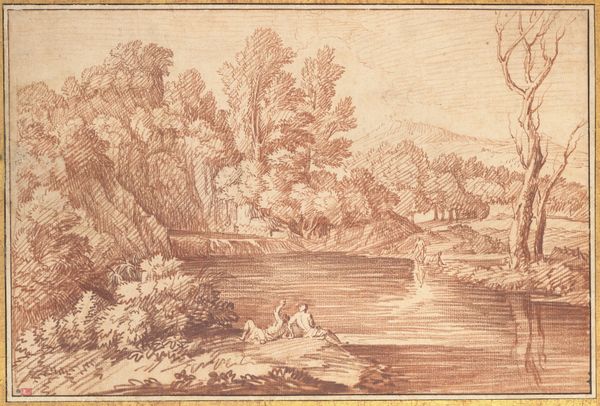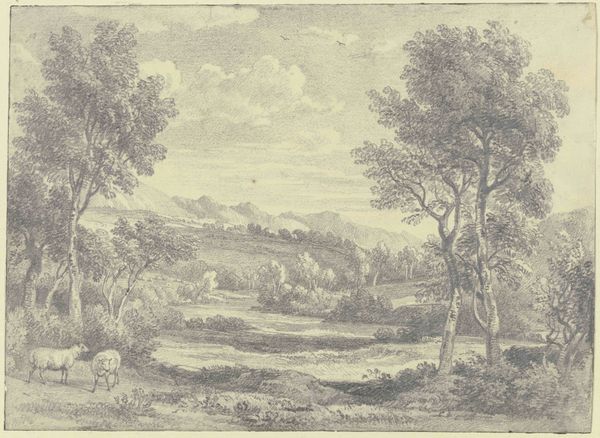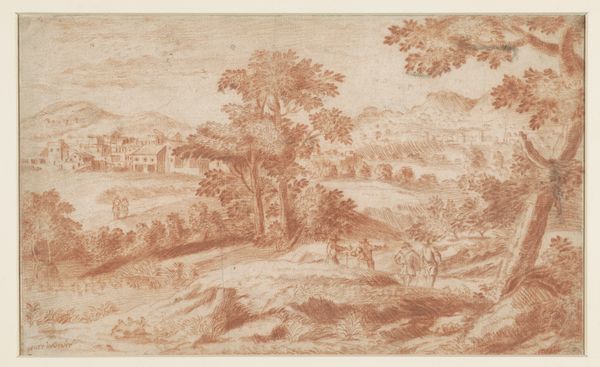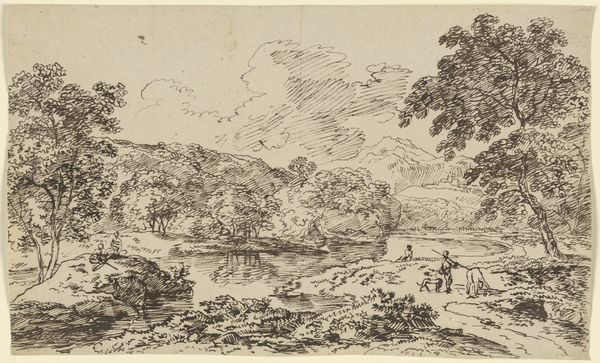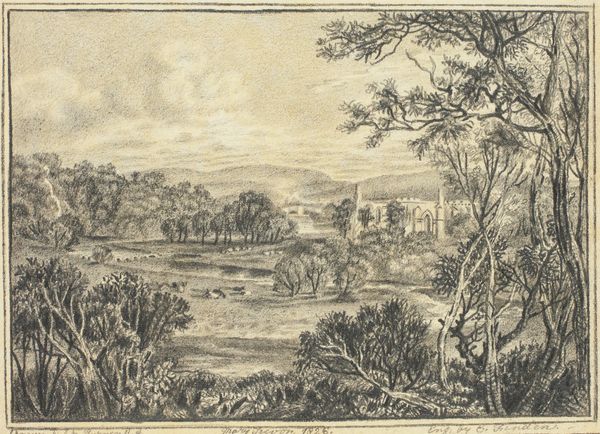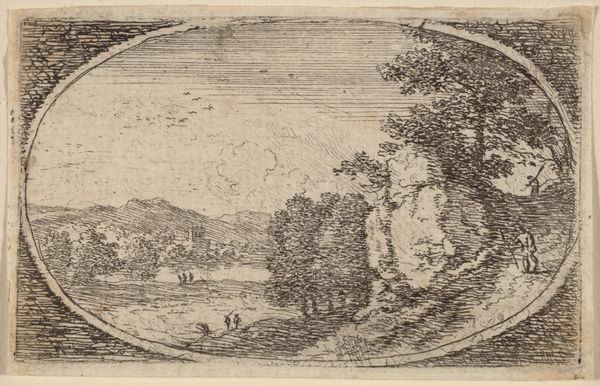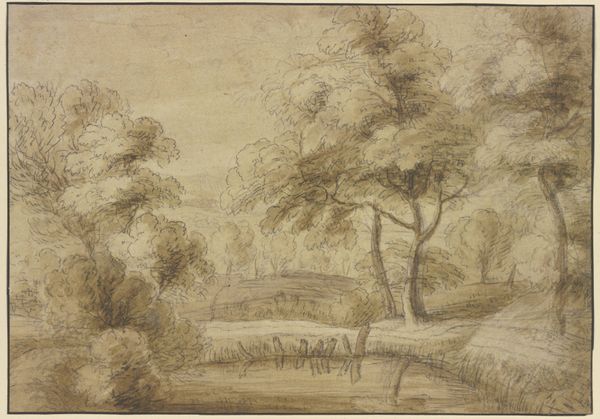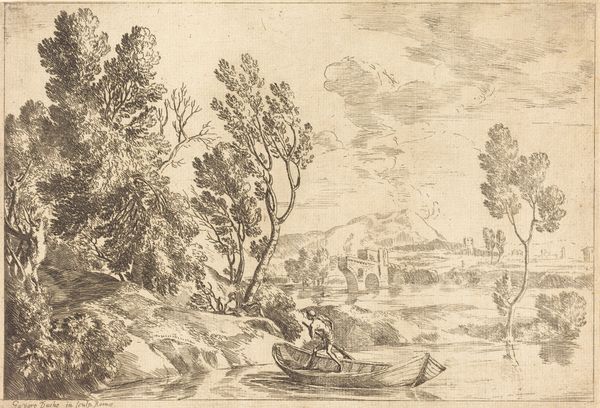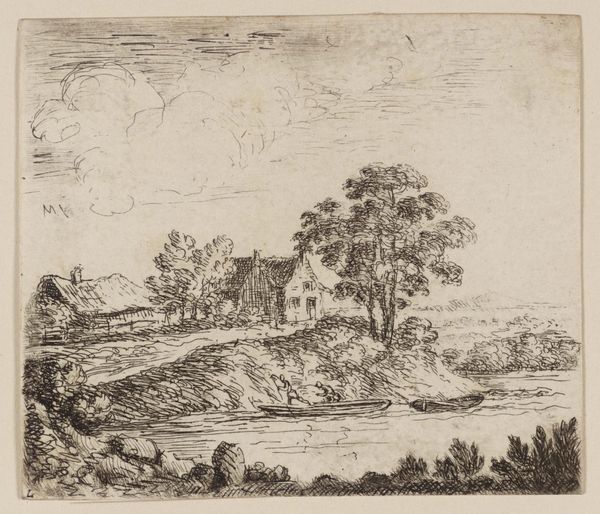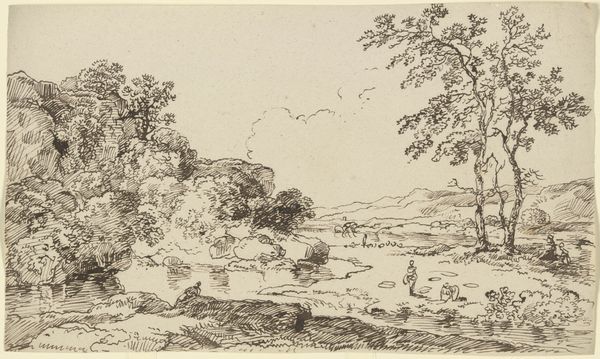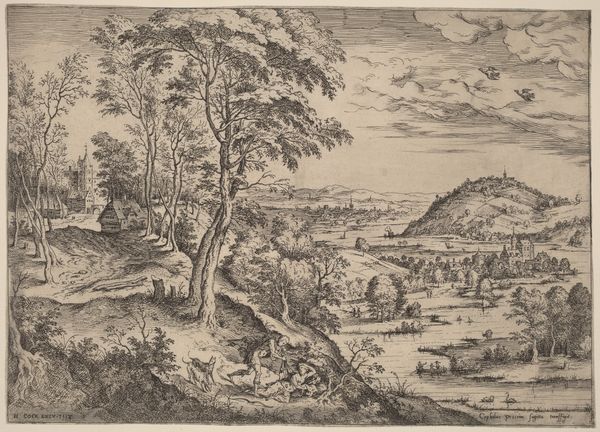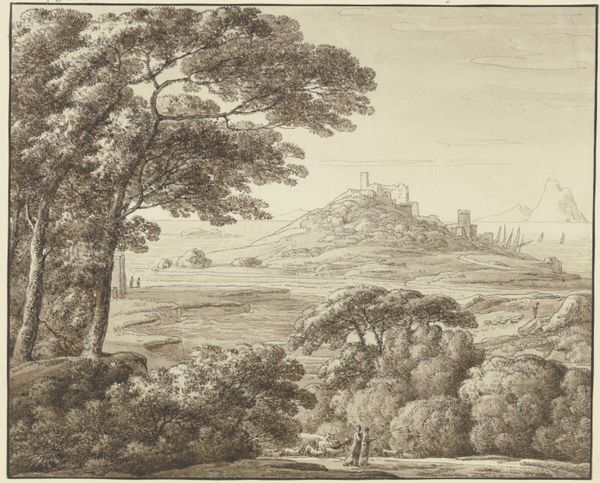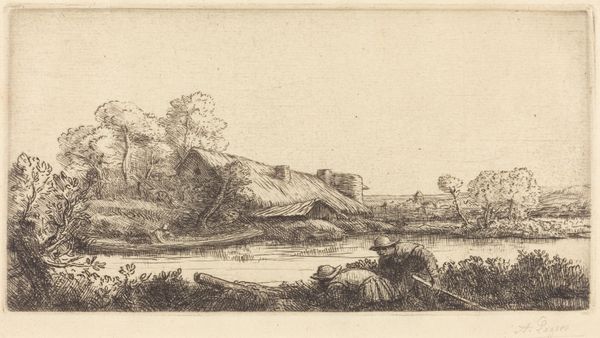
drawing, etching, paper, ink
#
drawing
#
baroque
#
ink painting
#
etching
#
landscape
#
etching
#
paper
#
ink
#
line
Copyright: Public Domain
Curator: What strikes me immediately is the artist's use of line, so simple yet so expressive. Editor: It’s delicate, like handmade lace, but brown sepia? What sort of raw materials went into the making of this etching by Claude Lorrain titled, "Landschaft mit Baumgruppe am Wasser?" It looks of the Earth and I’m grounded by the making of it. Curator: The baroque drawing dates to about 1650-1655. Its subtle coloring certainly lends the artwork warmth. Note how Lorrain carefully structured this composition, from the cluster of trees at left, leading the eye across the water, to the distant mountains and cloud formation on the right. Editor: The reflections on the water suggest a dialogue between the terrestrial and ethereal realms. What kind of paper and ink were available at this moment in the artist's era? Did the artist grind these pigments himself, and how was the price point affecting the acquisition and subsequent commodification of "art?" Curator: That sepia ink serves to unify the planes, as if we’re seeing the world through a lightly tinted lens. I would consider this line etching’s technical construction quite calculated: look at how the artist uses varied densities of hatching and cross-hatching to articulate volume and recession into space. Editor: Indeed, that space reflects how landscapes were converted into a visual commodity during this era. Etchings made art accessible to wider audiences as paper's increased availability spurred creative opportunities outside of royal patronage, while offering new economies of scale for artists beyond traditional painting or sculpture, it suggests an embrace of process, skill and production, don’t you think? Curator: To me, this demonstrates Lorrain's masterful command of pictorial space and a unified visual structure. But I also acknowledge how material developments and distribution methods impacted this kind of creativity. Editor: I find myself wondering if the material simplicity belies the larger impact these types of accessible artwork engendered during times of growing social inequality. I feel grounded by thinking about its material production! Curator: The power of line, spatial design and compositional control in visual culture. Editor: Production for the people! Thanks for the chance to think about what makes art valuable across historical chasms.
Comments
stadelmuseum almost 2 years ago
⋮
The use of pen-and-ink in this drawing is similar to that of the following composition. The ductus is stronger and denser, but in both cases they are inventions composed of Claude’s repertoire of landscape elements. The motif of mountains in the distance, over which spring clouds rise, gives the sheet a characteristically heroic note. After completing the drawing, Claude redid the lower right corner by adding plants and grasses to give the scene a compositional balance. Perhaps at the same time he set some darker accents in the group of trees just to the left of the centre.
Join the conversation
Join millions of artists and users on Artera today and experience the ultimate creative platform.
